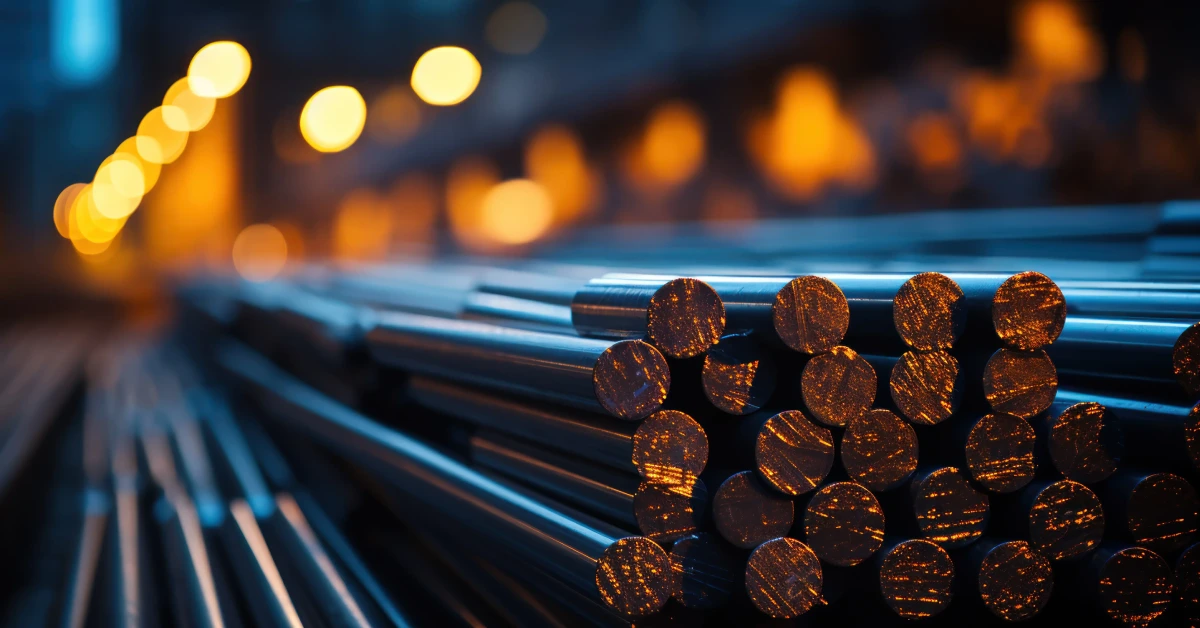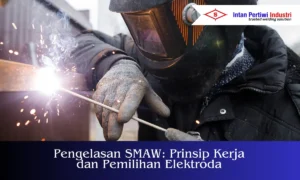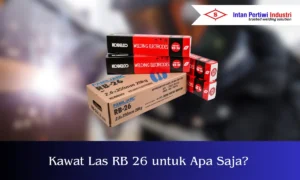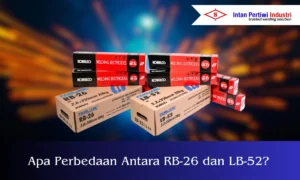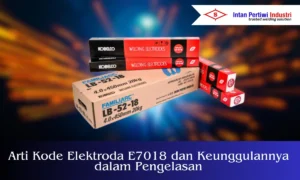Learn how to choose the right welding wire size based on the type of material, welding process, and current requirements. A comprehensive and practical guide from intanpertiwi.co.id!
Table of Contents
ToggleIntroduction
In the world of welding, choosing the right size of welding wire is a fundamental step in ensuring strong, precise, and safe welds. Many technicians, workshop workers, and engineering students often encounter difficulties when determining the right welding wire for their project needs.
Choosing the wrong size can cause welding defects, material waste, and even structural failure. Therefore, a comprehensive understanding of how to choose the right size of welding wire is essential for optimal and efficient welding work.
The size of welding wire cannot be chosen arbitrarily. Many factors need to be considered, ranging from the type of metal to be joined, the welding process used, to the available electric current.
In this article, we will discuss step by step how to choose the most suitable welding wire size for your needs, complete with easy-to-understand technical explanations.
How to Choose the Right Size of Welding Wire
Determining the right size of welding wire requires a systematic approach based on technical considerations. Here is a complete guide.
1. Identification of Materials Used
The first step is to identify the type of material to be welded. Is it carbon steel, stainless steel, aluminum, or another metal? Each type of metal has different physical and chemical characteristics, which affect the size of welding wire required.
For example, for mild steel or thin plates, small diameter welding wire such as 0.6 mm to 0.8 mm is typically used to prevent the plate from becoming perforated or deformed.
Meanwhile, for thick steel or heavy structures, larger welding wire such as 1.2 mm to 2.4 mm is needed so that the weld penetration is deep and strong enough.
2. Determine the Welding Process
The size of the welding wire must also be adjusted to the type of welding process used. Some common processes such as SMAW (Shielded Metal Arc Welding), GMAW (Gas Metal Arc Welding or MIG), and FCAW (Flux Cored Arc Welding) have different characteristics in the use of wire.
For example, in the MIG welding process, welding wire in the form of coils is used automatically, so that the selection of diameter size is more flexible and can be adjusted to the machine settings. Meanwhile, in the SMAW process, the selection of electrodes must be more careful because it is directly related to manual techniques and affects the welding results.
3. Select the Welding Wire Diameter
The diameter of welding wire is usually expressed in millimeters. This diameter determines the amount of metal melted at one time, and has a significant effect on the speed and results of welding. Here is a general guide:
0.6 mm to 0.8 mm: suitable for light work or thin plates
1.0 mm to 1.2 mm: ideal for medium-thickness metals
1.6 mm to 2.4 mm: used for heavy metals or large steel structures
The diameter selection must be adjusted to the thickness of the material. The thicker the material, the larger the wire diameter required to achieve perfect penetration.
4. Adjust to the Welding Current
Each size of welding wire requires a specific electric current to work optimally. If the current is too high for small wires, the wire will melt too quickly and cause welding defects. Conversely, if the current is too low for large wires, the melt will not be sufficient to bond properly.
For example, 0.8 mm wire is usually suitable for use with currents of 50 to 90 amps, while 1.2 mm wire requires currents of 100 to 200 amps depending on the type of process. Make sure your welding machine has current settings that can be adjusted to suit the wire being used.
5. Consider the Welding Position
The welding position also affects the choice of welding wire size. For vertical or overhead welding, smaller diameter wires are often easier to control and produce a drip that does not fall easily.
Conversely, in flat welding positions, you can use larger diameter wire because gravity helps maintain the shape of the molten pool. Therefore, it is important to know the working position before determining the wire size.
6. Pay attention to the type of electrode coating (for SMAW)
For those of you who use the SMAW or manual arc welding method, pay attention to the type of coating on the electrode. This coating not only protects the metal from oxidation, but also affects arc stability, melt shape, and current size.
Some types of electrode coatings, such as cellulose, rutile, or basic, have different current requirements and welding techniques. For example, rutile electrodes are more beginner-friendly and produce fewer sparks, while electrodes with basic coatings are more suitable for heavy-duty work and difficult positions.
7. Consult with Technical Specifications
Every welding project usually has certain technical standards that must be followed. For example, in construction, pipeline, or automotive industries, the size of welding wire must comply with AWS (American Welding Society) or SNI (Indonesian National Standard) standards.
Reading the technical data sheet (Welding Procedure Specification or WPS) can provide very useful information about the recommended wire size for that type of work. If available, consult with a technical expert or welding engineer.
8. Testing Before Use
After determining the size of the welding wire, it is important to conduct a trial run on a similar material first. The purpose of this is to ensure that the current, welding speed, and melting results are as expected.
This test also helps identify potential defects such as porosity, undercuts, or cracks that can arise due to improper wire size. Feel free to make a few minor adjustments before moving on to the main welding.
Conclusion
Choosing the right welding wire size is not just a technical matter, but also directly related to the quality and safety of the welding results. By understanding the characteristics of the material, the type of welding process, and the current and working position requirements, you can determine the most suitable wire size.
The steps discussed above can be used as a practical guide to ensure that welding work is carried out efficiently and produces strong joints. Don't forget to always refer to the technical specifications of the project and conduct trials before the main welding is carried out.
If you need recommendations for high-quality welding wire or want to consult about welding material requirements for your project, just contact us at intanpertiwi.co.id.
Here you can find a wide range of reliable welding products and solutions that are widely used in various industries.
This article is specifically designed to help you become more confident and precise in every step of your welding work. We hope you find it useful!


